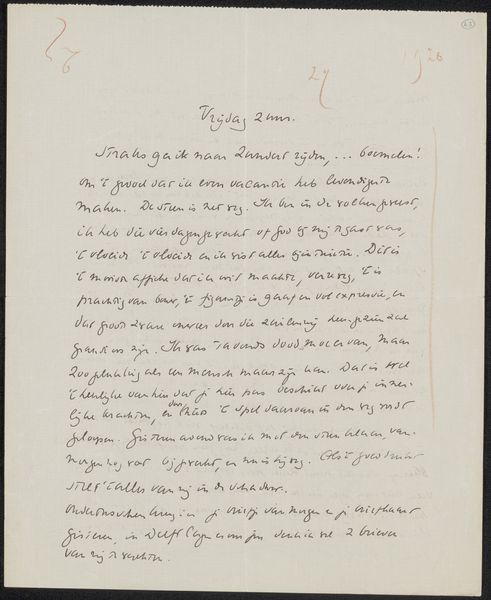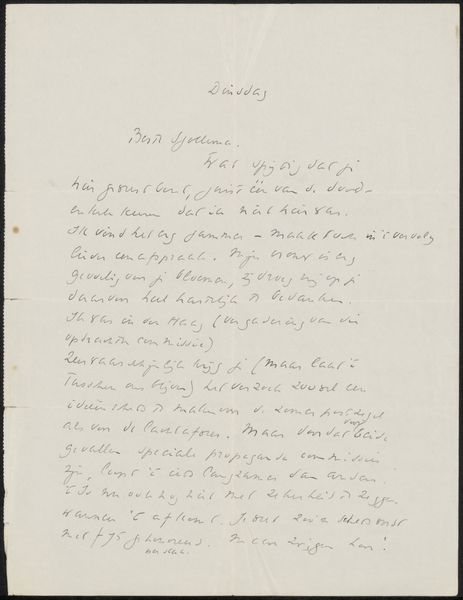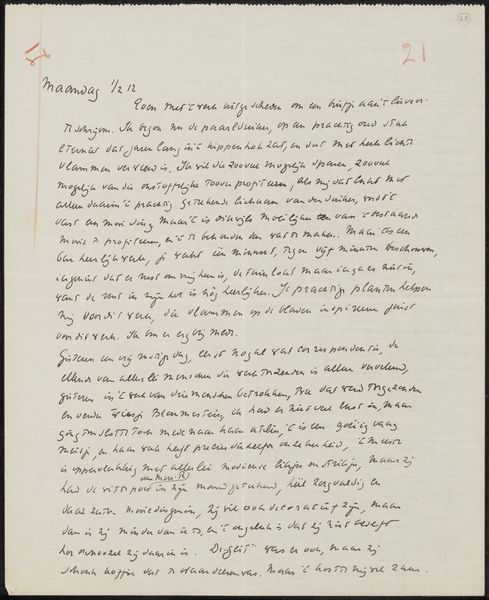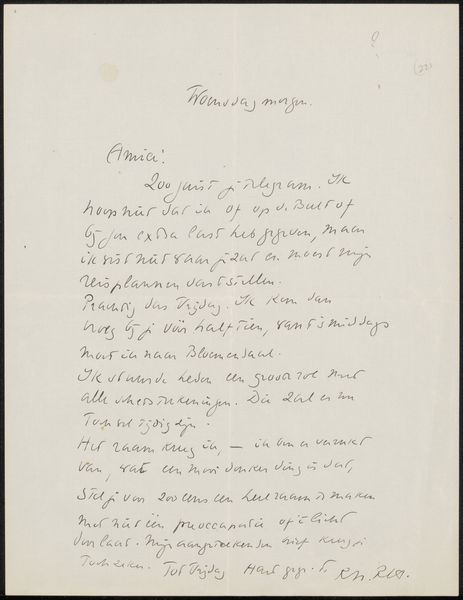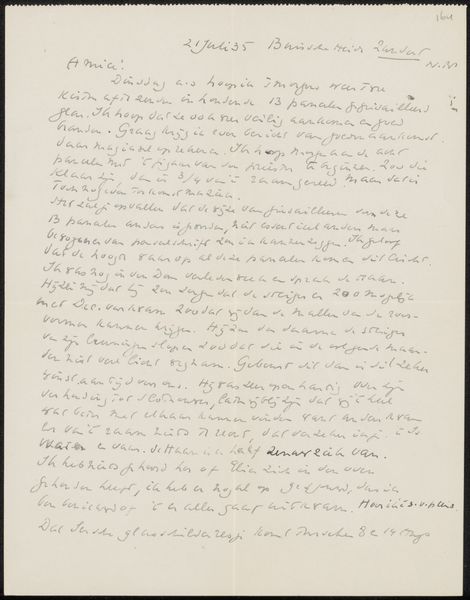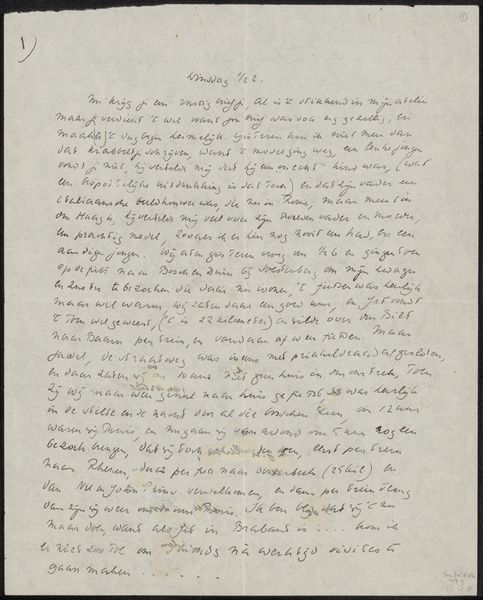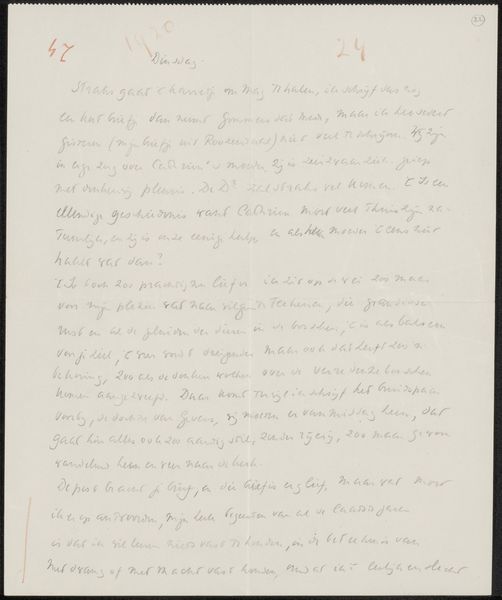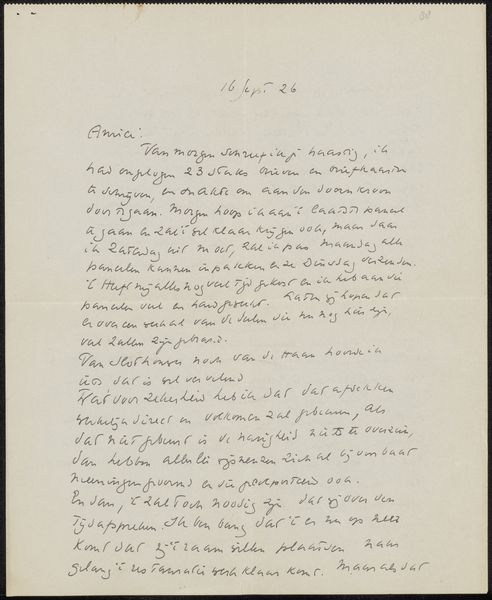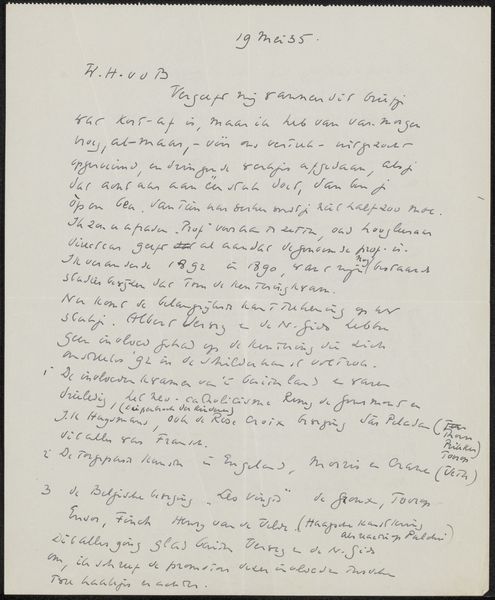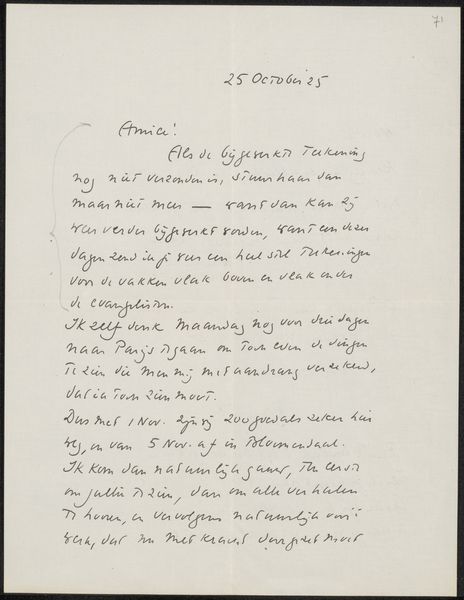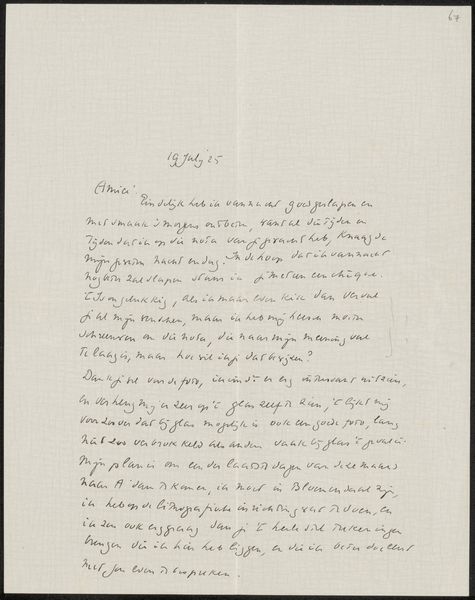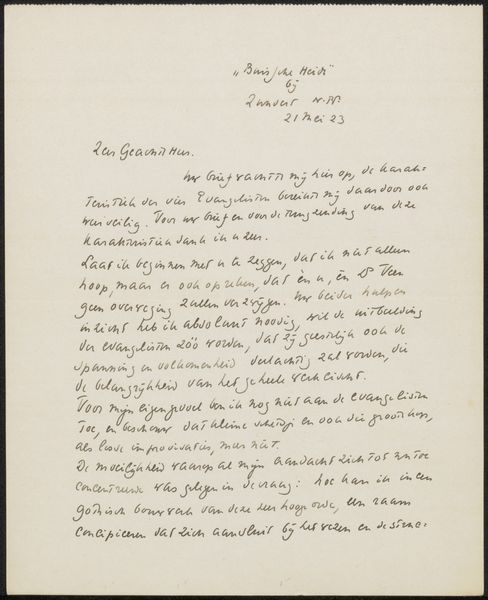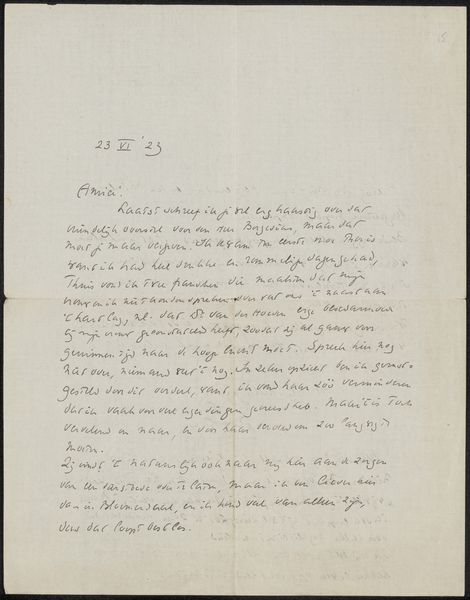
Brief aan Ina van Eibergen Santhagens-Waller c. 1878 - 1938
0:00
0:00
richardnicolausrolandholst
Rijksmuseum
drawing, paper, ink, pen
#
drawing
#
paper
#
ink
#
pen
Copyright: Rijks Museum: Open Domain
Curator: We're looking at a piece from the Rijksmuseum titled "Brief aan Ina van Eibergen Santhagens-Waller." It's an ink drawing on paper by Richard Nicolaüs Roland Holst, dating from around 1878 to 1938. It looks like an intimate handwritten letter. Editor: My first impression? The looping script gives a sense of urgency and yet, intimacy. There’s a hurried quality, perhaps, but with a clear sense of personal connection. Curator: Indeed. As an iconographer, I find the choice of script particularly compelling. Calligraphy has always carried a certain weight – it symbolizes education, sophistication, and in this case, direct communication. The handwritten form bridges the physical and emotional distance. Editor: From a historical perspective, handwritten letters offer unique insight into a bygone era. In a pre-digital age, this was a primary mode of connection. Examining the letter’s contents – the phrasing, the sentiments – we gain access to the nuances of social and personal relationships of the time. I wish I could read Dutch fluently! Curator: Even without understanding the language, consider how the variations in the thickness of the lines created with the pen might indicate emotional shifts in the writer. A darker stroke could signal emphasis, a lighter one, perhaps reflection. Holst conveys not only a message but also emotion in the very execution. Editor: And thinking about the recipient, Ina van Eibergen Santhagens-Waller. Letters like this offer a snapshot into a personal exchange and prompt us to consider how women navigated artistic and intellectual circles at the time. It is probably just a letter, yet one can dream it had a huge importance to the people invloved, no? Curator: Exactly. A personal item speaks to universal experience. What we’re viewing, essentially, is not simply ink on paper, but a moment suspended in time and history. Editor: Looking at this again after our discussion, the letter makes me want to seek out all forms of personal writing—letters, notes—that convey history’s unwritten emotions and insights. Curator: Yes, it really emphasizes the importance of slowing down to appreciate the nuances of direct human connection, in any form of written medium.
Comments
No comments
Be the first to comment and join the conversation on the ultimate creative platform.
